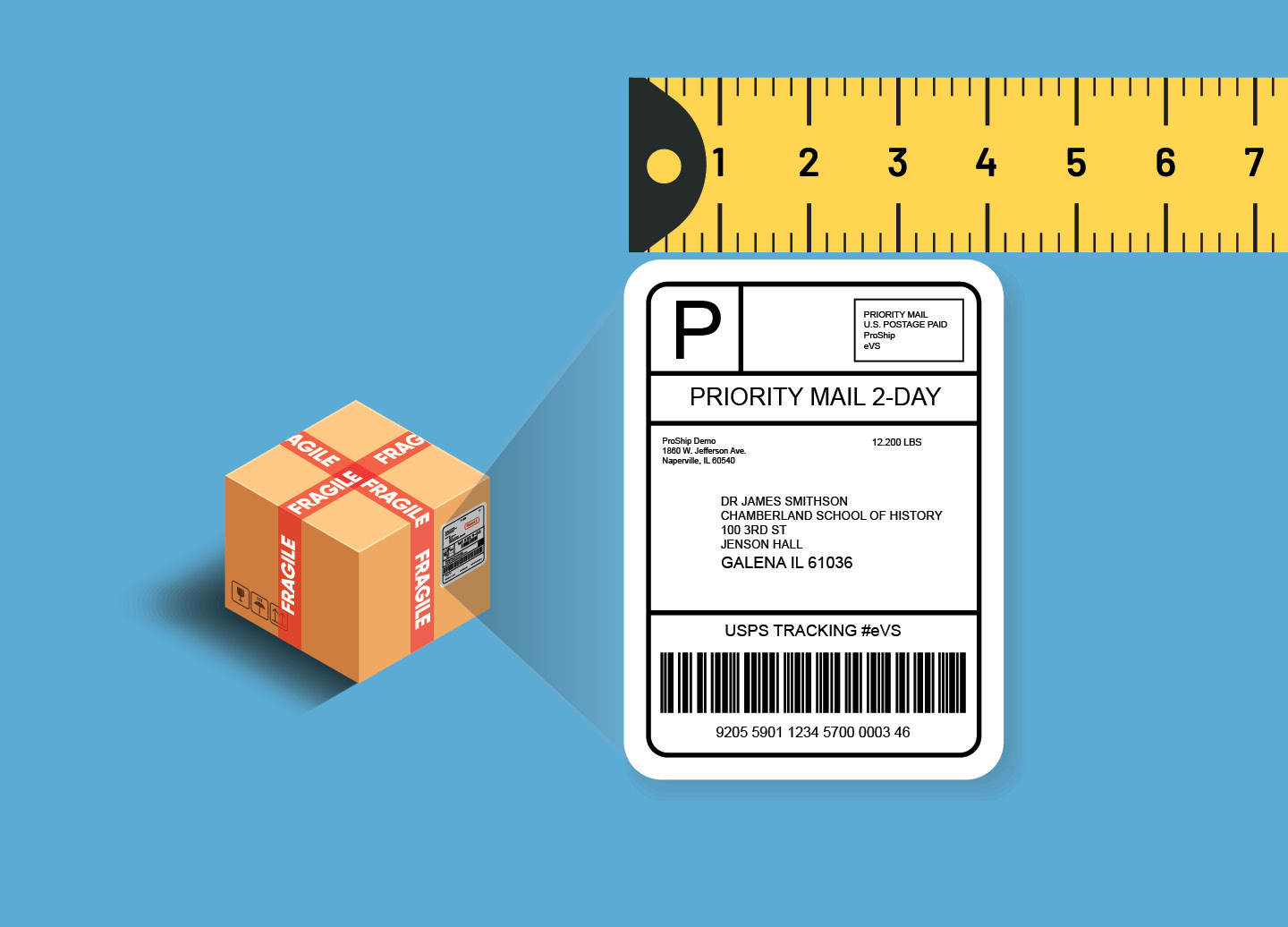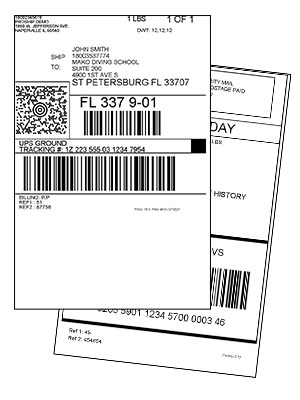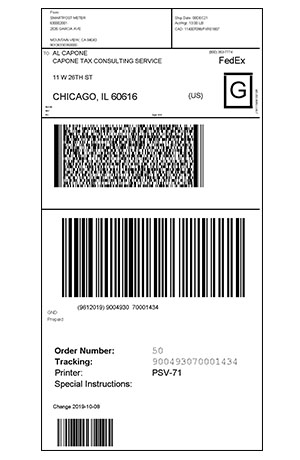Size Does Matter: The Finer Points of Parcel Label Sizing

ProShip shipping expert, Justin Cramer, describes common label sizes and their uses.
Label stock size is not something that every shipper thinks about, but as soon as a shipper needs to make that decision, they realize that there are unique intricacies to the world of label sizes.
With the introduction of dimensional fees on ground shipments several years ago, there has been an increased interest in label sizes. This interest, however, has not superseded the more critical concern of workflow and material handling.
This article is intended to walk through some of the most common label sizes seen in shipping, as well as when a shipper might want to use them.
Compact Parcel Labels (4x4.25)
UPS offers many service levels with labels as small as 4x4.25 inches. These are perfect for small boxes which contain hand-sized electronics, make-up, jewelry, and pharmaceuticals.
It should be noted that only a small number of domestic services support this most compact form factor, and a shipper will need to have operational plans for shipments that need to use the “standard” label size. For more details on what carrier services can be produced on compact labels, contact your Small Parcel TMS or Multi-Carrier Shipping Software provider.

Standard Labels (4x6)

If a shipper wants to use the most extensive list of carriers and services with a single label size, they should use a minimum of a 4x6 inch label. All North American, Asian, and most EU domestic carrier labels will fit nicely in a 4x6 inch footprint. This means that any carrier-required text, barcode, line, or graphic would fit on the label. Furthermore, when carriers require updates to their label formats, the new changes all fit in that “standard” 4x6 inch area.
The only drawback to the standard 4x6 inch and the compact label formats are that they do not leave any room for a shipper to add internal routing or receiving barcodes and markings. For that, we look to the most versatile label size.
Most Versatile Labels (4x8)
As nearly all carrier labeling requirements will fit in a 4x6 inch area, it is very common for shippers to use 4x8 inch stock. A good multi-carrier shipping software should be able to place the carrier’s document anywhere along the vertical of the 8-inch label stock.
This means that a shipper has two inches above the carrier data, two inches below the carrier data, or anywhere in-between to place additional data, images, lines, and barcodes they may want to place on the label.
For B2C shippers, we see logos, notes, and other things often included on the label. For B2B shippers, a UCC/EAN-128 barcode for SSCC/GS1/MH10 compliance is often used. Many shippers use the space for material handling barcodes or visual sort codes to help Ship-from-Store (SFS) workers ensure the package is tendered to the correct carrier. However, there is really no limit to what can go in this extra space.

Largest Labels (Collates)

Some operational flows (case picks, SFS) may lend themselves to even larger shipping documents. These documents can be as large as any printable sheet of paper (Letter, Legal, A4, etc.).
These larger formats often contain collated information (hence the nickname, “collates”). This collated information can include:
- Outbound shipping label (4x6)
- Return service label (4x6)
- Item to ship
- Shippers’ terms and conditions
- Marketing-based information
The only limit to the information that can be placed on a collate is the size of the paper used and ensuring that the multi-carrier shipping software has access to the data to be placed.
Pro Tip: Most shippers using a collate will use specialized stock that has been die-cut with glue applied so that the shipping and return labels can be peeled off and applied to the shipping container.
Specialty Labels
There are a few specialized contract services from the carriers that may require custom label stock, including some international consolidated clearance services. Alas, there is no way around these custom label sizes/stocks. Most shippers have a dedicated label printer for these labels at the workstations they expect to process them. They are seldom labeled on a print and apply conveyor.
Closing Thoughts
With all these options available for label sizes, it is crucial to partner with a multi-carrier shipping software provider who has extensive knowledge of the appropriate services and label recommendations. ProShip’s team of supply chain and IT experts are committed to your business and dedicated to producing a positive customer experience. Reach out to connect with one of our skilled professionals today!
Author Bio

Justin Cramer is Co-Founder of ProShip, where he has deployed, designed, or consulted on over 300 customer solutions within 4 continents and has designed shipping solutions executing more than 1.1 million labels a day. Justin has been on the IT side of shipping since 2001.
Learn More...

